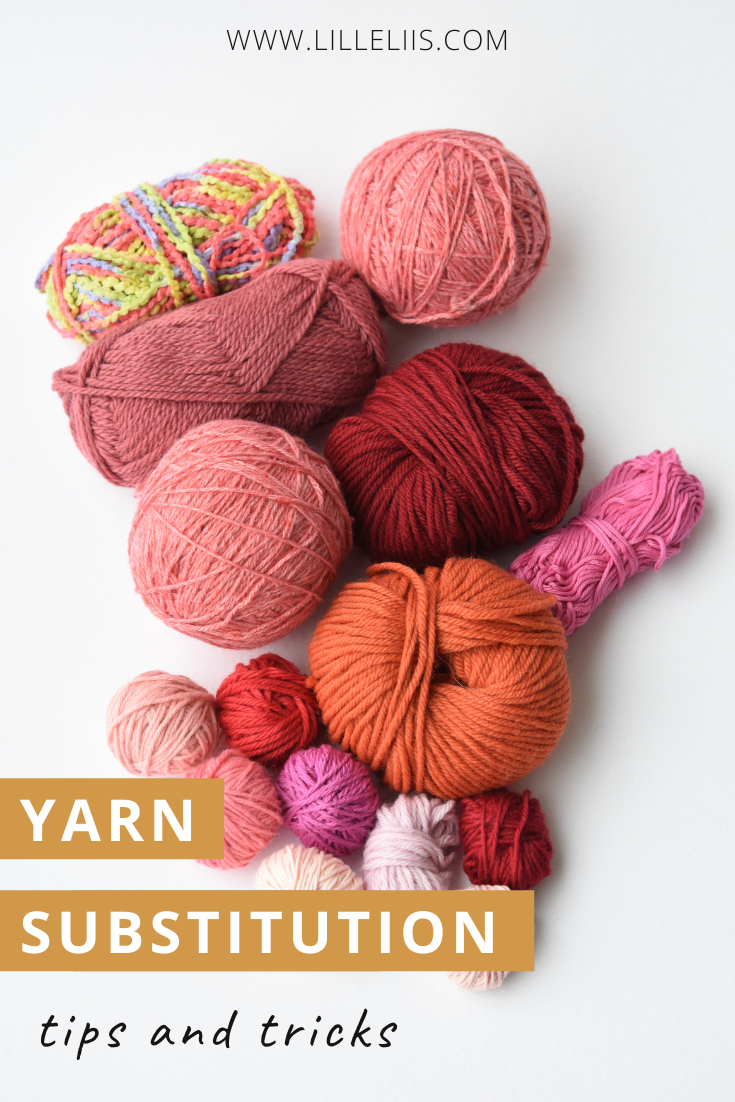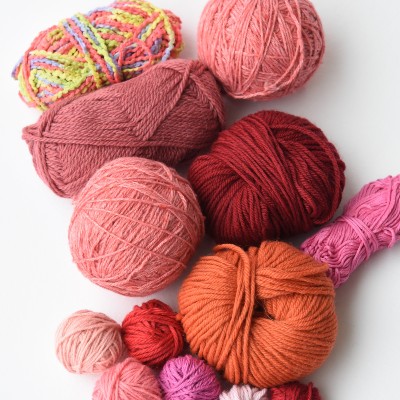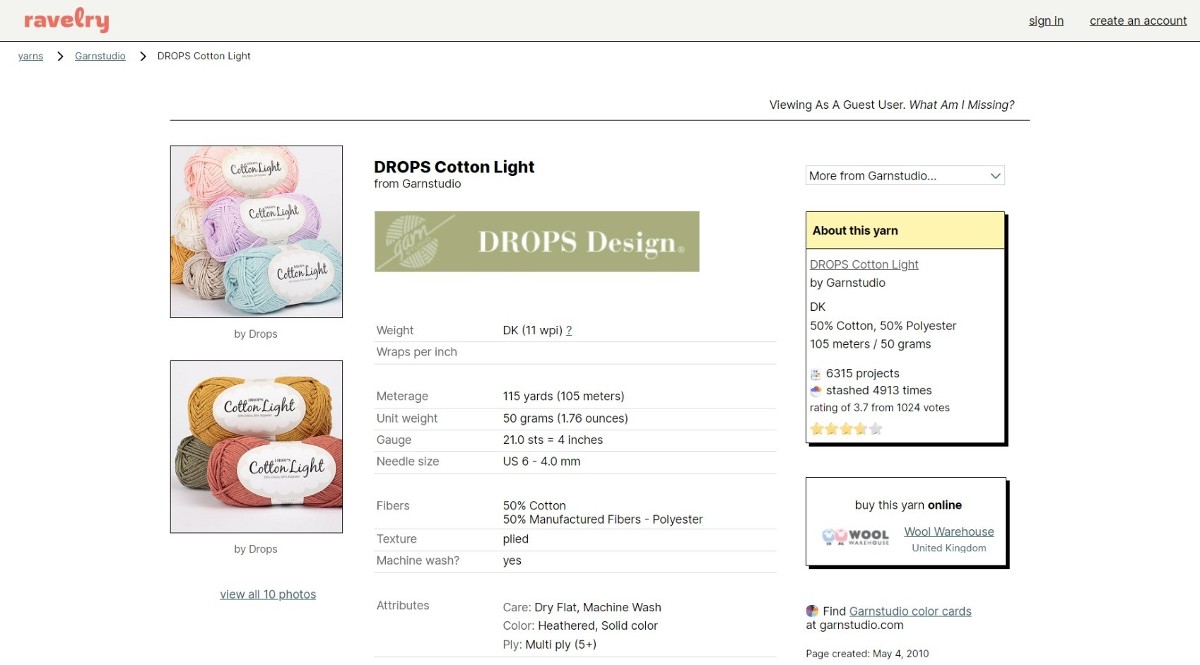Tips and tricks
Yarn substitution
Today I want to talk about yarn substitution. It`s an important topic because there are makers from different parts of the world, and we do not have the same brands and materials available in our regions. Or, sometimes it can be that a yarn used in the pattern is simply too expensive for the maker. So let`s open up the topic.
I have some special tips and tricks to share with you, but first you have to understand what are the features you need to consider when finding a substitute.
First of all the weight.

WEIGHT
1. GRAMS AND METERS
Even if you have no specific understanding of yarn weight, you can still understand the grams and meters. It`s the most basic information you can find on any yarn label.
So basically, you are interested in how many grams of yarn there is in a meter. This says a lot about yarn thickness. For example, 75 meters in 50 grams is way thicker than 150 meters in 50 grams.
Remember: The lower the number of meters, the bulkier the yarn.
If you need to find for a substitution, check the original yarn used in the pattern, and search for the grams in meters information. Then try to find a yarn as similar as possible to those numbers.
How to Google yarn?
I normally use Google Search to find technical information about yarn. Simply type in the name of the yarn and you`ll most probably find a webshop where they sell it and also have the yarn label information included.
MY SPECIAL TRICK
My special trick is to use Ravelry database (no account needed). Type in the Google Search the yarn name + Ravelry (for example Drops Cotton Light Ravelry), and you`ll see all information Ravelry has about the yarn including metric, fibers and maintenance.
2. YARN WEIGHT CATEGORIES
In some countries the most common way of understanding the yarn weight is yarn categories. This means yarn weight is determined by measuring the diameter – or the thickness – of a strand of yarn. There are around 5 to 7 categories depending on a country.
In the yarn comparison table below I have included the grams and meters too to make it even more clear.
If you need to find for a substitution, compare yarn labels and pick an alternative in the same yarn weight category.
| US | UK | AUSTRALIA | m / 50 grams |
|---|---|---|---|
| 0 or Lace | 1 ply | >400 | |
| 0 or Lace | 2 ply | 300-400 | |
| 1 or Super Fine | 3 ply | 3 ply | 250-300 |
| 1 or Super Fine | 4 ply | 4 ply | 175-225 |
| 2 or Fine | 5 ply | 125-175 | |
| 3 or Light | DK (Double Knit) or 8 ply | 8 ply | 100-125 |
| 4 or Medium | Worsted, Aran | 10 or 12 ply | 60-100 |
| 5 or Bulky | Chunky | 12 or 16 ply | 50-65 |
| 6 or Super Bulky | Super Chunky | <50 | |
| 7 or Jumbo | <50 |
FIBERS
Another feature you should consider is the fibers. If the original pattern uses cotton and you want to achieve a result closest to the original, also pick cotton. The same goes to wool or any other mixtures.
In amigurumi however, you can easily change fibers as well. It`s no problem to make a woolen bear in cotton or the other way round.
MY SPECIAL TRICK
If you`re still struggling finding a replacement yarn, try YARNSUB.COM. It`s an easy online tool you can use for free.
Simply enter the name of yarn and it will do the job. They have over 11K yarns in their database and the system shows in percentage how close is the match.



Thanks a lot for your advisd. I’ll use it fflm now on. 🙏
Very helpful. I didn’t even think to check how many meters per ball compared to what the pattern calls for. I’ll be doing that from now on. Thank you!
Thanks so much! I´m glad this little tip helps.
That was so helpful thanks.